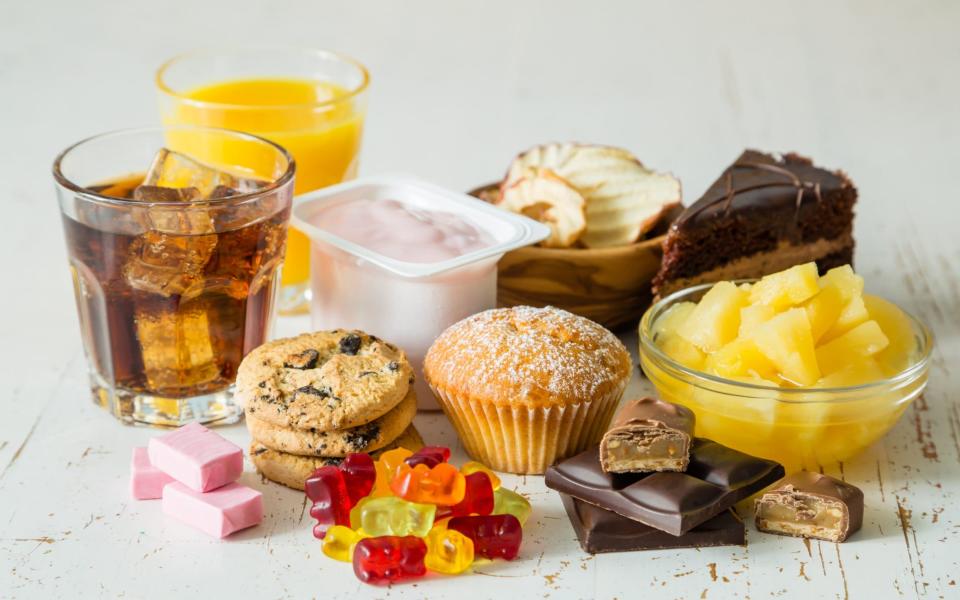How to identify 'ultra-processed' foods – the grub that's linked to death

You knew that cheeky packet of crisps or chocolate bar at 3pm every day wasn't great for your health – but did you know to what degree?
A pair of new studies published in the British Medical Journal link have laid bare the dangers of consuming 'ultra-processed' food – a category that contains white bread, ready meals, sausages, sugary cereals, fizzy drinks, and crisps. The research claims that a diet with a lot of ultra-processed foods increases the risk of an early death by 60pc.
This builds on research shared in February where scientists Paris-Sorbonne University tracked the diets and subsequent mortality of nearly 45,000 middle-aged French participants. They found that every 10 per cent increase in intake of “ultra-processed food” was linked to a 14 per cent increased risk of death within the next eight years.
Worrying? If you look at the statistics around our food consumption, it should be. According to a separate study from 2018, 'ultra-processed' foods make up around 50pc of British diets.
Professor Maira Bes-Rastrollo, from the University of Navarra, told BBC News: "It is said that if a product contains more than five ingredients, it is probably ultra-processed." But there is a slightly more in-depth way of looking at it.

The term “ultra-processed foods” is a relatively new one, coined by Brazilian nutrition researcher Carlos Monteiro, creator of NOVA, a food classification system that ranks foods on just how processed they are. NOVA has become widely used in recent years, helping to clear up the confusion caused by the fact that, previously, “processed” meant different things to different people. For example, some would consider freezing and canning food to be processing it, while for others processing meant adding certain chemicals.
NOVA divides food into four groups: Unprocessed or minimally processed foods, processed culinary ingredients, processed foods, and ultra-processed foods. So, which is which, and how can you tell them apart?
Group One – Unprocessed or minimally processed foods
This is a two-in-one category, but, in short, it’s probably not worth you worrying about these foods too much.
Unprocessed foods are defined as “edible parts of plants (seeds, fruits, leaves, stems, roots) or of animals (muscle, offal, eggs, milk), and also fungi, algae and water”, that you can eat without doing anything to them.

Minimally processed foods are those which have had some small cosmetic things done to them such as removal of inedible or unwanted parts. Freezing, boiling, canning, vacuum-packing, and pasteurisation are also considered minimal processing.
Crucially, food and drink can only be considered unprocessed or minimally processed if it has not had additives put into it. One small caveat is additives used to preserve the properties of the original food, such as vacuum-packed vegetables with added anti-oxidants.
Group Two – Processed culinary ingredients
Next up we’ve got ingredients that are made by processing Group One foods or obtained directly from nature. For example, salt mined from seawater or sugar made from sugarcane. Basically all stuff that is designed for cooking and seasoning other dishes.
Again, they mostly won’t contain additives, except those used to preserve the properties of the original food.

Group Three – Processed foods
The easiest way to think of processed foods is that they’re made from added the two previous groups together. Think of something like salted fish, for example. Processed foods are generally made from two or three ingredients.
Here the object of processing the food is “to increase the durability of group 1 foods, or to modify or enhance their sensory qualities.”
Additives are also added to processed foods to preserve their original qualities or prevent microbial infection.
Group Four - Ultra-processed foods
And finally we come to the food group which has been linked to higher mortality. These ones are the “industrial formulations” where ingredients from Group One are a very small proportion or even entirely absent. Think pre-made ready meals, powdered soups, biscuits, chocolate, and ice cream.
You’ll find that ultra-processed food have many additives including sugar, salt, fat, oil, and preservatives. Ingredients are sometimes extracted from other foods or derived from processing processed foods even further.
Ultra-processed foods are the only category where you’ll find dyes, colour-stabilisers, flavourings, non-sugar sweeteners, and emulsifiers. In addition, the processes used to make ultra-processed foods are ones which use machines and don’t have any traditional equivalent.
NOVA also defines ultra-processed foods as those that are ready to eat, ready meals that only need to be heated. It also defines some of the market conditions of ultra-processed foods: “Common attributes of ultra-processed products are hyper-palatability, sophisticated and attractive packaging, multi-media and other aggressive marketing to children and adolescents, health claims, high profitability, and branding and ownership by transnational corporations.”
Foods from Groups One and Three which have had “cosmetic or intensifying additives” put into them, such as yoghurt with artificial sweeteners, also count as ultra-processed foods.
How should you use the NOVA guide to eat healthily?
This guide to food processing was actually designed for a Brazilian food and nutrition guide which recommends ensuring that Group One foods form the basis of your diet, with small amounts of Group Two ingredients for taste.
Group Three foods are ones that you should try to cut down on if you can and only eat as part of a meal with Group One and Two foods.
Finally, Group Four foods should be removed from your diet entirely.
It may seem a challenge to take these classic (and delicious) foods out of your diet but if the results of this recent study are to be believed, doing so might help you live longer.

